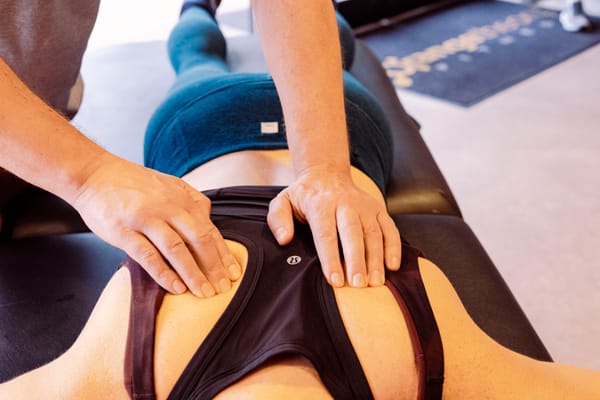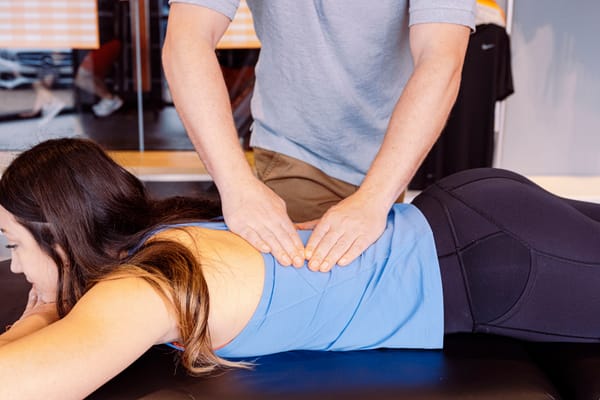
Massage for Tendonitis
What is Tendonitis?
Tendonitis can be metaphorically likened to a rope that has started to fray under constant tension. Imagine a rope used to hoist a heavy sail on a ship. Over time, with repeated hoisting and exposure to harsh elements, the rope frays, weakening at certain points.
Similarly, a tendon repeatedly used and under stress can become inflamed and irritated, leading to tendonitis. Just as the frayed rope struggles to perform efficiently and risks further damage under continued strain, a tendon with tendonitis becomes painful and less effective at supporting and moving the joint it serves, especially if the stress continues without giving it a chance to heal.
Causes Of Tendonitis
The cause of tendonitis is typically repetitive strain and micro-trauma to a tendon over time. This often results from overuse or engaging in activities that put excessive or abnormal stress on the tendon. Commonly, tendonitis arises in body parts subjected to frequent, repetitive movements. These can include occupational tasks, sports, or daily activities involving the same motions repeatedly.
Poor posture or incorrect technique during these activities can exacerbate the strain on the tendons, increasing the risk of developing tendonitis. Additionally, a sudden increase in the intensity or frequency of these activities can trigger the condition's onset.
Other contributing factors to tendonitis include age-related wear and tear and certain medical conditions. As people age, tendons become less elastic and more prone to injury, making older adults more susceptible to tendonitis.
Underlying health issues like diabetes or rheumatoid arthritis can also predispose individuals to tendon inflammation. In some cases, an acute injury can lead to tendonitis if the tendon doesn't heal properly, leading to chronic inflammation.
It's important to note that while overuse and strain are the primary causes, the development of tendonitis can be multifactorial, involving a combination of physical activities, individual health conditions, and lifestyle factors.
Common Symptoms Of Tendonitis Are:
- Pain: A dull ache, especially when moving the affected limb or joint
- Tenderness: The area around the tendon is sensitive to touch
- Mild Swelling: Slight inflammation around the affected area
- Stiffness: Reduced mobility in the affected joint
- Weakness: Decreased strength in the area surrounding the inflamed tendon
- A Grating or Cracking Sensation: Feeling or hearing this when the tendon is used (also known as crepitus)
Tendonitis Prevention and Treatment
Adopting practices that reduce strain on your tendons is crucial to prevent tendonitis. This primarily involves ensuring proper technique and posture during physical activities and work-related tasks. Regular exercise to strengthen muscles can significantly support your tendons, reducing the risk of overuse or injury.
The treatment of tendonitis typically begins with conservative methods. Rest is essential to allow the inflamed tendon to heal properly. Applying ice to the affected area can help reduce inflammation and relieve pain. Over-the-counter anti-inflammatory medications, like ibuprofen, are often recommended to manage symptoms. In certain cases, doctors suggest using splints or braces to immobilize the affected area temporarily.
Having practiced as a trigger point therapist since 2004, I've developed a process to alleviate the pain associated with tendonitis, particularly during its acute phases. The precision of trigger point therapy allows for targeted relief and recovery, directly addressing the areas most impacted by tendonitis.
Through regular trigger point massage sessions, I've maintained muscle and tendon flexibility in my clients, preventing these tissues from becoming overly tight or strained.
This approach fosters an environment where muscles and tendons can heal and strengthen, significantly reducing the likelihood of future flare-ups and contributing to long-term musculoskeletal health.
Trigger Point Therapy and Tendonitis
Iler Method® Therapy, a specialized massage therapy, effectively manages tendonitis. Our specialized approach focuses on identifying and treating specific areas of tension or 'trigger points' in the body. By applying targeted pressure to these points, trigger point therapy enhances blood circulation in the affected regions.
This increase in blood flow is crucial as it brings essential nutrients and oxygen to the damaged tissues, facilitating healing. This massage also helps break down the knots and release the muscle tension that can contribute to tendonitis.
The Iler Method's approach to trigger point therapy offers a highly efficient treatment for managing acute tendonitis. It provides immediate relief by alleviating pain and decreasing inflammation in the affected area. We help improve joint mobility by relaxing the muscles and tendons surrounding the inflamed area, restoring their normal function.
Beyond treating tendonitis symptoms, our trigger point therapy addresses the underlying chronic tension patterns that often contribute to the condition. This makes it a comprehensive strategy for managing tendonitis, offering relief during acute flare-ups, and aiding in preventing future episodes by maintaining overall muscle and tendon health.
Iler Method's "Hold and Release Rhythm" to Treat Pain
The Iler Method Therapy offers an effective way to treat tendonitis through a process known as the "Hold and Release Rhythm." This involves applying pressure on trigger points or adhesions on and around the tendons for 10-15 seconds, extending up to 30 seconds for tougher spots.
The key is timing: the pressure is released for brief intervals of 1-3 seconds. These pauses are critical as they enhance blood flow to the area, bringing in nutrients and hormones, like HGH and insulin, necessary for tissue repair.
Therapists remain attuned to the client's non-verbal cues, such as body adjustments or deep breaths, using these moments to give brief respite. This not only aids in physical healing but also supports achieving a relaxed, parasympathetic state, which is essential for recovery.
By repeating this process, the good news is that the Iler Method systematically releases all assessed trigger points. This tailored treatment makes it a potent option for managing tendonitis effectively.
Therapist Checklist for Assessing When to move on to the Next Tight Muscle
☐ Muscle flexibility improved: The overall muscle becomes more pliable and less restricted compared to the start of the session.
☐ Trigger point reduction: The size of the trigger points decreases.
☐ Dissipation of adhesions: Adhesions within the muscle tissue dissolve.
☐ Client feedback on release: The client indicates feeling a release in tension, and the therapist agrees.
☐ The perception of decreased pressure: The client feels less pressure despite the therapist applying the same amount, indicating muscle release.
Massage for Tendonitis: FAQs
Are massages good for tendonitis?
Yes, massage therapy, especially trigger point therapy, can benefit tendonitis pain. This massage focuses on releasing muscle and tendon tension, which can help alleviate pain and improve mobility in the affected area.
What is the fastest way to relieve tendonitis pain?
Apply trigger point therapy to areas your massage therapist assesses for the fastest tendonitis pain relief.
Does massage work on ligaments and tendons?
Massage therapy can be effective when working on the muscles that facilitate movement and support the ligaments and tendons.
How to massage for Achilles tendonitis
For Achilles tendonitis massage, a therapist who is well-versed in the anatomy and movement of calf muscles is essential.
How often to massage tendonitis
For treating tendonitis, depending on the severity of the pain, it's recommended to have massage therapy one to two times a week for several weeks.
Where to massage for patellar tendonitis
For patellar tendonitis, focus on massaging the muscles related to the knee, including those around the patellar tendon.
Final Thoughts: Massage for Tendonitis
Tendonitis, similar to the earlier metaphor of a rope under unrelenting tension, arises when tendons get inflamed due to repetitive stress. This condition causes pain and reduces the tendon's functionality. The Iler Method® Therapy specializes in trigger point therapy and is particularly well-suited for massage therapy in this context.
In acute cases of tendonitis, this therapy offers immediate relief by alleviating pain and reducing inflammation. It improves joint mobility by relaxing surrounding muscles and tendons, helping to restore normal function.
More than just treating symptoms, this therapy addresses underlying chronic tension patterns, forming an integral part of a holistic management strategy. Incorporating trigger point therapy into a treatment plan can significantly aid recovery and improve long-term joint health for tendonitis clients.




